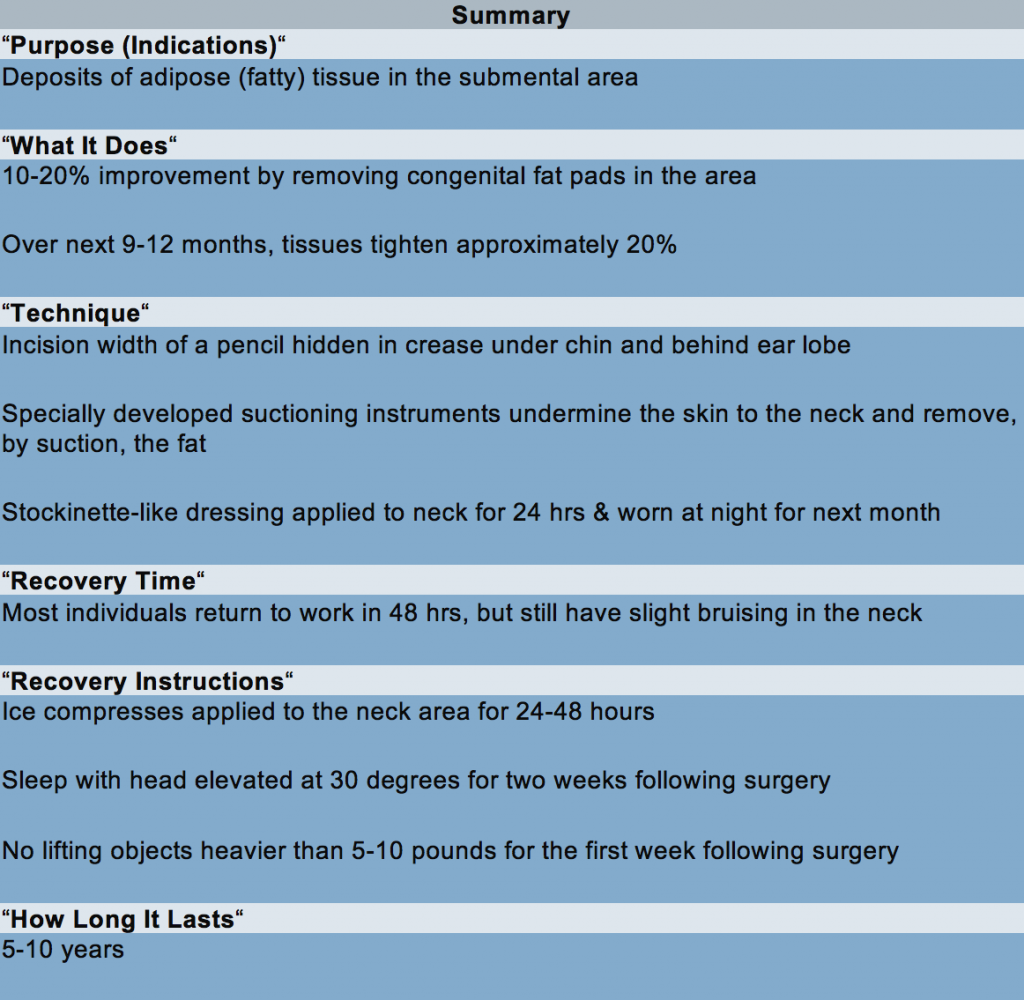
Some individuals are troubled at the early age with fullness under the chin and in the neck. This is often due, in part, to hereditary deposits of adipose [fatty] tissue in the submental area. Often, patients confirm that this appearance tends to run in their family and frequently is a characteristic of their mother or father.
If the bone structure in the neck is good and if the submandibular salivary glands are small, results of submental lipectomy can often be dramatic and postpone the need for facelift surgery. This procedure works best on young to middle-aged individuals who have good skin tone. Without good skin tone, the fatty tissue would be removed, but the skin tightening that occurs secondary to undermining tissues would not take place. Women can identify with this phenomenon. If a woman has a baby at the age of twenty, she regains her figure more easily and the stomach tissues flatten back to their pre-pregnancy state. However, if a woman has a baby later in life, the tissues do not easily recoil and she may even need a tummy tuck. Much the same thing can happen in the face. Liposuction often results in 10-20% improvement by removing the congenital fat pads in the area. Over the next 9-12 months following liposuction, the tissues that have been undermined tighten approximately 20% giving even more improvement. However, if this tightening effect did not occur, the patient would be left with tissue laxity in the neck and would be a candidate for facelift surgery.
It is important for a patient to realize that a facelift removes fatty tissue, re-supports muscles, and removes excess skin in the neck, cheek, jowl, and lateral temporal areas. The necklift removes fatty tissue, re-supports muscles, and removes some skin in the submental and neck area. A submental lipectomy only removes excess fatty tissue and relies upon the skins ability to tighten itself. It is not a replacement for a facelift or a necklift. However, dramatic results can be obtained with a minimal amount of discomfort and recovery time in appropriate individuals.

Schedule a Consultation
Communication is not secure. Contacting the practice does not establish a physician/ patient relationship.*